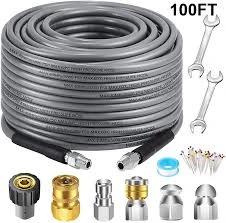Understanding the Importance of Brake Lines in Vehicle Safety and Performance
Understanding Brake Lines in Cars Importance and Maintenance
Brake lines are an essential component of a vehicle's braking system, responsible for conveying brake fluid from the master cylinder to the brake calipers or wheel cylinders. These lines play a crucial role in ensuring effective braking performance, which is vital for vehicle safety. In this article, we will explore the workings of brake lines, their types, maintenance tips, and how they contribute to overall vehicle functionality.
How Brake Lines Work
When a driver presses the brake pedal, it activates the master cylinder, which generates hydraulic pressure in the brake fluid. This pressure travels through the brake lines to the brakes at each wheel, forcing the brake pads against the rotors or the shoes against the drums, thereby slowing down or stopping the vehicle. The hydraulic nature of this system allows for smooth and efficient braking, while also providing the driver with a consistent feel at the pedal.
Types of Brake Lines
Brake lines can be made from various materials, primarily steel, rubber, or a combination of both. Steel brake lines are known for their durability and resistance to damage. However, because they are rigid, they can be susceptible to corrosion over time, particularly in environments with harsh weather conditions. On the other hand, rubber brake lines offer flexibility, allowing for movement as the vehicle’s suspension compresses and rebounds. However, they can deteriorate more quickly than steel lines, especially when exposed to heat and oil.
brake line in car

Additionally, there are reinforced braided brake lines, which combine the benefits of both materials. These lines provide the flexibility of rubber with the strength of steel, resulting in improved braking performance and durability. Many performance-oriented vehicles opt for these types of lines to enhance braking consistency under high-stress conditions.
Maintenance and Potential Issues
Routine maintenance of brake lines is vital for ensuring the safety and reliability of a vehicle’s braking system. Regular inspections can help identify potential problems, such as leaks, corrosion, or wear and tear. Drivers should be aware of warning signs such as a spongy brake pedal, warning lights on the dashboard, or visible fluid leaks. Any of these symptoms could indicate that the brake lines may need replacement.
Flushing and replacing the brake fluid at regular intervals is also crucial. Over time, brake fluid can absorb moisture, which can lead to corrosion within the brake lines and a decrease in braking efficiency. Maintaining clean and effective fluid ensures that the entire braking system operates reliably.
Conclusion
In summary, brake lines are a vital component of any vehicle's braking system, responsible for transferring the hydraulic pressure necessary to stop the car effectively. Understanding the different types of brake lines and their functions can help drivers appreciate the importance of regular maintenance. By staying proactive about brake line inspections and fluid changes, vehicle owners can significantly enhance their safety on the road and prolong the life of their braking system. Remember, when it comes to brakes, neglecting small issues can lead to big problems—staying informed and attentive is the best way to ensure safe travels.
-
Ultimate Spiral Protection for Hoses & CablesNewsJun.26,2025
-
The Ultimate Quick-Connect Solutions for Every NeedNewsJun.26,2025
-
SAE J1401 Brake Hose: Reliable Choice for Safe BrakingNewsJun.26,2025
-
Reliable J2064 A/C Hoses for Real-World Cooling NeedsNewsJun.26,2025
-
Heavy-Duty Sewer Jetting Hoses Built to LastNewsJun.26,2025
-
Fix Power Steering Tube Leaks Fast – Durable & Affordable SolutionNewsJun.26,2025

